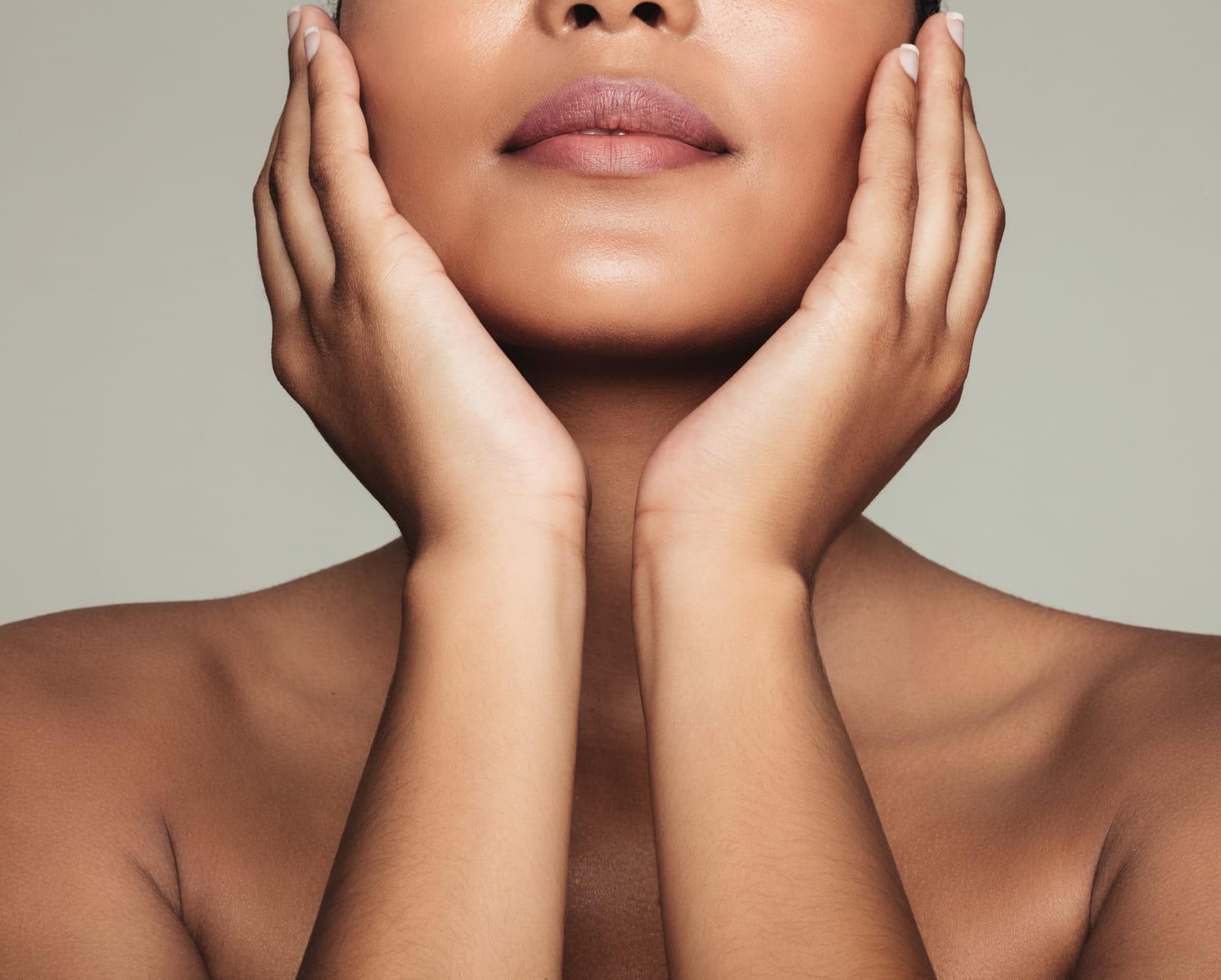
The 4 Sensitive Skin Types: Which One Are You?
Almost everyone thinks their skin is sensitive, but it’s important to understand the specific type of sensitivity you’re experiencing so you can know how to treat and prevent it. It may not be as sensitive as you might think!
What is Sensitive Skin?
Sensitive skin is difficult to define because the definition can be different for everyone. Generally speaking, though, I view sensitive skin as skin that is easily reactive (meaning, you have to think twice before you slather on any new products). I would divide people with sensitive skin into two categories: those who truly have a genetic predisposition for sensitivity and those who are making their skin sensitive because of something they’re doing.
Most people struggling with sensitivity fall into the latter category. If you’re wondering how to know if you have sensitive skin, consider that the people most likely to experience sensitivity are fair, thin-skinned people such as those of European descent (think Irish, Scottish, Scandinavian).
The Four Types of Skin Sensitivity
To know what type of skin sensitivity you have, these are the four types of sensitivity seen most often by aestheticians. It’s important to keep in mind that a person can experience more than one of these sensitivities at a time:
1. Allergic Sensitivity
An allergy occurs when the body’s immune system sees a substance as harmful and overreacts to it. Because anyone can have an allergy, all skin types can experience this type of sensitivity. This can be a reaction to something applied topically or to something internal. Your skin also acts as an excretory system to get rid of things the body doesn’t agree with, so things like food allergies can manifest on the skin. A food sensitivity can appear around the mouth, neck, or face — basically anywhere food has come into contact with your skin.
It can be tricky to treat an allergic sensitivity because you ultimately need to find the root cause. This is where a little detective work comes in. Because allergic reactions typically happen within 24 hours of coming into contact with an allergen, it’s a good idea to retrace your steps. Keep in mind that, when it comes to topical products, it’s uncommon to suddenly react to something you’ve been using forever, so try to remember if you introduced anything new in that time frame.
How to Deal with Allergic Sensitivity
- Stop using suspected allergens. This means skin care products, foods or anything else.
- Simplify your routine and focus on calming the skin. Stick to the basics, like a cleanser and moisturizer, and stop using active ingredients, like retinoids and exfoliating acids.
- Use ice compresses on affected areas.
- Consult with your doctor. If you’re experiencing enough swelling, itching or discomfort, your doctor may recommend an antihistamine. If the problems persist, you can also ask your doctor or an allergist to perform an allergy test to get to the bottom of it and find out the trigger.
- Check whether any of your usual products have been reformulated. I once had a client who reacted to a moisturizer she had been using for a long time. This reaction occurred right after she started using a brand new bottle of the moisturizer. Come to find out, the company had reformulated it ever so slightly without mentioning anything to their customers about the change. It was only one ingredient, but it was enough to throw my client’s skin completely out of whack and set off an allergic response.
2. Breakout-Prone Sensitivity
If skin care products (especially those with a heavy or rich texture) easily cause clogged pores or breakouts, this could be you. A breakout will occur when someone’s skin produces a lot of thick, sticky oil. This traps dead skin cells in the pore-lining and keeps oxygen from circulating through the pore, which creates the perfect environment for bacteria to thrive. The underlying cause of getting breakouts is hard to pinpoint, as it can be anything from genetics to a simple case of bad luck. There are, however, certain things you can do to minimize this type of sensitivity.
Characteristics of Breakout-Prone Sensitivity
- Bumpy skin texture
- Whiteheads
- Blemishes (pustules and cysts)
- Milia
- Common Causes of Breakout-Prone Sensitivity
- Sonic cleansing brushes
- Liquid foundations (especially long-wear)
- Liquid primers
- Cream blushes
- Facial oils in their pure form
- Water-resistant sunscreen (especially when combined with heat from the sun)
How to Deal with Breakout-Prone Sensitivity
- Use lightweight skincare products. Avoid products that are too thick in texture as well as heavy oils and sunscreens (especially water-resistant sunscreens).
- Don’t experiment with products too much. This will only put you at unnecessary risk for clogged pores and breakouts. Think, “if it’s not broken, don’t fix it,” and be sure that any time you try new products that you watch how your skin reacts it before applying another product.
- Introduce active ingredients into your routine slowly. If you’re breakout-prone and already have clogged pores, be aware that sometimes active ingredients like exfoliating acids or retinoids can cause an initial “purging.” This refers to more active blemishes coming to the surface as the rate of skin cell turnover increases. This will dissipate once your skin cells get reorganized, but in order to minimize purging, you should introduce active ingredients into your routine slowly. Start with just once a week and build up.
- Use calming and anti-bacterial ingredients in your skincare routine. The logic behind this is that you should avoid irritation and inflammation, which can trigger breakouts, and keep pores clear without drying out the skin. An acne facial is perfect for soothing and hydrating skin while simultaneously getting rid of bacteria.
Get educated about makeup and how it affects your face.
3. Heat-Activated Sensitivity
Some people have skin that is sensitive to heat. This is because heat causes an increase in blood flow to the capillaries (small blood vessels just below the skin’s surface). This causes capillaries to dilate and expand, which makes them more visible and causes the skin to appear red. Once the skin is cooled down and the internal temperature is lowered, capillaries will constrict again and the redness will go away. Ideally, it’s best to avoid this repeated stretching and constricting because it can eventually lead to permanently enlarged capillaries that remain visible on the skin’s surface. If you are someone who already has rosacea, you will be especially prone to heat-activated sensitivity.
How to Deal with Heat-Activated Sensitivity
- Avoid exposing your skin to high temperatures whenever possible. This includes avoiding hot water, intensive exercise like hot yoga and even eating spicy foods.
- Look for products with calming, soothing ingredients like witch hazel, green tea, cucumber, vitamin e, and also try putting your products in the fridge so they are cooling to the skin when applied.
4. Dry/Dehydrated Sensitivity
The underlying cause of almost any dry/dehydrated sensitivity is a fragile or disrupted moisture barrier. When the skin’s moisture barrier is compromised, it causes microscopic cracks to open up. These allow moisture to escape from the skin and irritants to penetrate more easily. This can sometimes lead to skin burning or stinging, which is an inflammatory reaction to something that has been applied topically to skin with a disrupted moisture barrier.
Characteristics of Dry/Dehydrated Sensitivity
- Flaking or peeling
- Eczema prone
- Itchiness
- Tightness
- Rough texture
- Stinging or burning sensation
Common Causes of Dry/Dehydrated Sensitivity
- Dry climates or airplane travel
- Changing seasons (Hello, winter!)
- Ingredients like synthetic fragrances and perfumes, some essential oils, Avobenzone or Sodium Lauryl Sulfate
- Harsh, drying products like foaming cleansers or prescription acne treatments
- Over-exfoliating with acids (this can lower your skin’s pH to the point where it disrupts your moisture barrier)
How to Deal with Dry/Dehydrated Sensitivity
- Cut back on exfoliation. This includes physical exfoliators like scrubs, cleansing brushes, and washcloths as well as acid exfoliators.
- Use a gentle cleanser that won’t strip the skin of moisture. Also avoid products that are heavily fragranced, as this will further irritate sensitive skin.
- Start using a hydrating toner after cleansing.
- Look for a moisturizer with barrier-repairing ingredients.
I hope you found this helpful in understanding why your oh-so-delicate skin acts the way it does. As always, Botanica Day Spa is here for you with our favorite facials and a team of brilliant aestheticians to help you figure out your skin type and what products best to use!
Love,
Gen



Leave a Reply